Keith Miller's Blog, page 8
August 4, 2011
Longonot and Naivasha
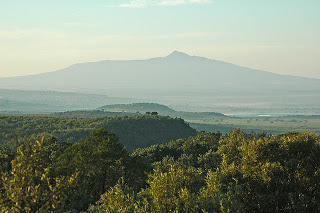
photo: Kalense the Kid
My family and I spent the month of July in Kenya, where I grew up. One of the things I wanted to do (besides eat murg makhanwala and nyama choma!) was climb Mt. Longonot, a dormant volcano, with my kids.
I went to high school at Rift Valley Academy, which is on the side of the escarpment. Longonot dominated the landscape, and I used to draw it constantly. Its slumbering form has inhabited my dreams.
Longonot, which last erupted in 1863, is a classic caldera. It took about two hours to climb with the kids (aged five and eight). My son basically had to be dragged up the steeper sections, and a couple times I didn't think he was going to make it. But it was all worth it for the stunning experience of reaching the top and peering over the rim, which is only a couple paces across. The floor, several hundred meters below, is carpeted in bush. Sulfuric steam rises from a fissure in the wall. On the outer slopes, one can see very clearly where the lava spilled over the edge and pooled.
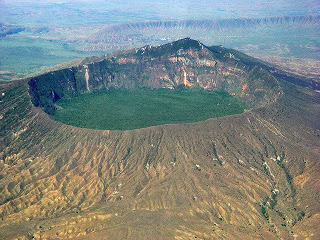
photo: Tambako the Jaguar
From the top of Longonot, we could look over at Lake Naivasha, which is just an hour and a half from Nairobi, and used to be a favorite vacation spot when I was a kid. The lake is now surrounded by huge greenhouse-type structures, where flowers are grown for export to Europe. Planeloads fly out daily. This generates a lot of cash, but growing flowers requires a huge amount of water, and the lake is rapidly shrinking. When I was young, we used to take boats to Crescent Island. As you can see in the satellite photos below, the island became a peninsula about ten years ago (though, amusingly, it's still called "Crescent Island").
But now the open e
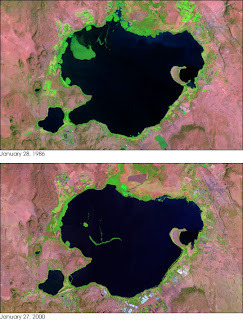 nd has almost closed up, creating another, smaller lake. One effect of this shrinking is that there is now about a mile of new, pristine parkland beside the lake, where giraffe, impala, zebra, and waterbuck gambol. It's lovely to stroll there in the late afternoons. But in a few years, unless some sort of action is taken, Lake Naivasha will be no more.
nd has almost closed up, creating another, smaller lake. One effect of this shrinking is that there is now about a mile of new, pristine parkland beside the lake, where giraffe, impala, zebra, and waterbuck gambol. It's lovely to stroll there in the late afternoons. But in a few years, unless some sort of action is taken, Lake Naivasha will be no more.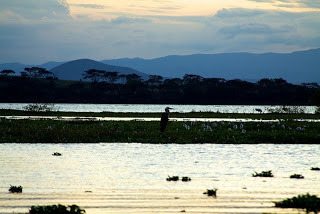
photo: mckaysavage
Published on August 04, 2011 04:25
July 25, 2011
The Readers' Fruit

Cherries are the perfect fruit for reading. Peaches and mangoes are too messy. Apples are fine (though they're better for walking: "Apples for walking, and a pipe for sitting . . ." as Sam Gamgee says). Apricots are excellent. But cherries! The handy little stem! The fun little seed!
I remember one vacation in Platres, up in the highlands of Cyprus (and incidentally the town where King Farouk invented the brandy sour: he needed an alcoholic drink that looked like iced tea, so he could drink while entertaining conservative Muslims!). My wife and I were the only guests at a cute little hotel. It had an enormous, sunny balcony, with a view down over the grapevines and tiled roofs. I bought a bag of cherries and put them in a big bowl, and we sat with our feet up, reading and eating cherries. I was reading Middlemarch, as I recall - my first experience with the extraordinary George Eliot, and somehow the cherries matched her sweet, tart, polished prose . . .
Published on July 25, 2011 07:57
July 19, 2011
"Toto's 'Africa'" . . . by Hemingway

My wife and get our kicks from reciting the nonsensical lyrics to pop songs. Excellent examples include Duran Duran's "Hungry Like the Wolf" and the Bee Gees' "Staying Alive." Our favorite, though, is certainly Toto's "Africa," which sounds like it should mean something, but is just ridiculous:
"It's gonna take a lot to take me away from you
There's nothing that a hundred men or more could ever do
I bless the rains down in Africa
Gonna take some time to do the things we never have
The wild dogs cry out in the night
As they grow restless longing for some solitary company . . ."
The video is priceless.
I was therefore delighted to discover that Anthony Sams on McSweeney's has written up "Africa" as a short story by Hemingway. Here's a sample:
"The young man looked at the wristwatch again. His head spun from whiskey and soda. She was a damned nice woman. It would take a lot to drag him away from her. It was unlikely that a hundred men or more could ever do such a thing. The air, now thick and moist, seemed to carry rain again. He blessed the rains of Africa. They were the only thing left to bless in this forsaken place, he thought—at least until she set foot on the continent. They were going to take some time to do the things they never had."
Published on July 19, 2011 03:57
July 17, 2011
Sebald's Last Interview

Here is the last interview by W.G. Sebald, before he died in a car crash at the age of 57. He was author of Vertigo, The Emigrants, The Rings of Saturn, and Austerlitz. All four books were published in the last decade of his life.
I liked his comments about writers and walking.
Published on July 17, 2011 04:21
May 29, 2011
SQUEEEEEE!
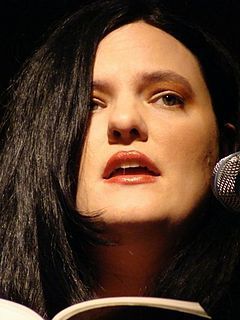
Catherynne M. Valente is in Madison for WisCon, and I got to hear her read yesterday afternoon (from Fairyland)! In person, she's taller and quite a bit more attractive than I'd imagined, with long witchy hair and smouldering eyes. She's a great reader, and had the audience in stitches. Fairyland is doing extremely well - it's on the NY Times best seller list at the moment. I started reading it aloud to my daughter last night, and she's loving it.
Published on May 29, 2011 07:41
May 8, 2011
Churches on Fire

I was disheartened to read this morning that a mob set a church on fire in Cairo. This is the latest in a series of violent inter-religious incidents that began on New Year's Day with the bombing of a church in Alexandria, in which twenty-three people died. I worry that the loosening of the political strictures has also freed people to express long-repressed emotions about the "other side." Christians form a substantial, prominent minority in Egypt (10-15%). Their religious practices and religious language (Coptic) are deeply connected to the ancient pharaonic religion.
Though many Egyptians, Muslim and Christian, are viscerally antagonistic toward each other, there are some outstanding exceptions. My wife and I spent three wonderful years working with Mennonite Central Committee in Beni Suef, where we were seconded to the Orthodox Church. Our supervisor, Father Youssef Andrawas, was one of the most saintly people I've encountered, with a passion for creating dialogue between Muslims and Christians. You can read a first-person account of his life and ministry, as well as a bit about our work, in this issue of A Common Place magazine (PDF file).
Beautifully, Christians met in their burned-out church on Sunday to celebrate mass (both images are from Storyful):

Published on May 08, 2011 06:20
May 1, 2011
The Girl Who Circumnavigated Fairyland
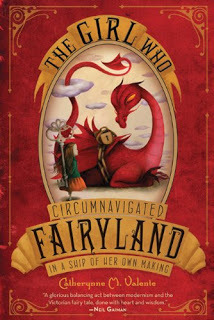
Catherynne M. Valente's latest novel, The Girl Who Circumnavigated Fairyland in a Ship of Her Own Making (which started out as a novel mentioned in Palimpsest) is available as a free download till May 2 from here. This is actually the work that first got me interested in Valente, when she was putting it out chapter by chapter on her website.
Published on May 01, 2011 04:00
April 14, 2011
Bad People
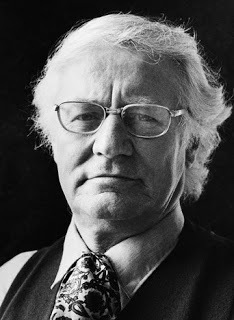
BAD PEOPLE
Robert Bly
A man told me once that all the bad people
Were needed. Maybe not all, but your fingernails
You need; they are really claws, and we know
Claws. The sharks - what about them?
They make other fish swim faster. The hard-faced men
In black coats who chase you for hours
In dreams - that's the only way to get you
To the shore. Sometimes those hard women
Who abandon you get you to say, "You."
A lazy part of us is like a tumbleweed.
It doesn't move on its own. It takes sometimes
A lot of Depression to get tumbleweeds moving.
Then they blow across three or four States.
This man told me that things work together.
Bad handwriting sometimes leads to new ideas;
And a careless God - who refuses to let you
Eat from the Tree of Knowledge - can lead
To books, and eventually to us. We write
Poems with lies in them, but they help a little.
Published on April 14, 2011 03:54
March 27, 2011
Ishi and Le Guin
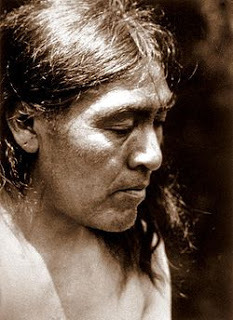
Wired magazine has an article about Ishi, the last of the Yahi tribe of American Indians, who died on March 25, 1916. He emerged from the wilderness in 1911, and was offered a place to stay at San Francisco's museum of anthropology. The anthropologists who took him in were T. T. Waterman and Alfred L. Kroeber. Kroeber's wife, Theodora Kroeber, later wrote Ishi in Two Worlds, based on Alfred's notes (she hadn't met Ishi).
Now, Alfred and Theodora Kroeber were, of course, the parents of Ursula Kroeber Le Guin. It is interesting to speculate on the impact the Kroebers' anthropological work had on her fiction. Always Coming Home and "Buffalo Gals Won't You Come Home Tonight" certainly draw heavily on American Indian culture. Ged, as described in her novels, might have looked something like Ishi. And the trope of the solitary carrier of information is present in works such as The Tombs of Atuan, "The Stars Below," and The Dispossessed.
Published on March 27, 2011 06:52
March 20, 2011
Roald Dahl
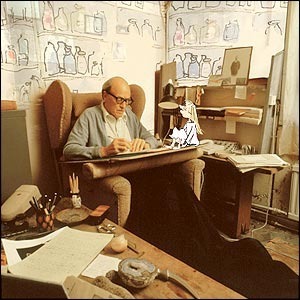
My wife got me Storyteller: The Authorized Biography of Roald Dahl for my birthday. I've been a huge fan of Dahl's since I was about five. I love Charlie and the Chocolate Factory, James and the Giant Peach, and, especially, the stories.
Here are some interesting tidbits:
It turns out that much of the received lore - that his Gloster Gladiator was shot down over Libya, that he wrote Charlie to pay for Patricia Neal's treatment after a stroke, that he had invented gremlins - was either fabricated or embellished.
The original Charlie was black, possibly based on Dahl's servant Mdisho in Tanzania. The Oompa Loompas were originally "African Pygmies," but had to be made blond after an outcry from the NAACP. (Irrelevant aside: my favorite cat, Mihwi, was eaten by pygmies in Burundi.)
After his first book of stories - the excellent Over to You - he struggled for years. His first novel, Sometime Never, was a complete failure, and is now out of print. No one would take his second, Fifty Thousand Frogskins. Now, this was actually the most interesting information in the book to me. I have always felt that the four stories grouped under the title "Claud's Dog," as well as "Parson's Pleasure," in which Claud appears, were his best work. I'd even commented to my wife at one point that if he'd turned those into a book, it would have been an amazing work. Now, apparently the Claud stories were salvaged from Fifty Thousand Frogskins after it failed to find a publisher. So this means that the book I crave is actually out there! Will someone please, please publish it! Incidentally, Claud, and the father from Danny, the Champion of the World, were based on a neighbor, Claud Taylor, who was "a storyteller and a bit of a rogue," and was one of Dahl's favored companions.
Dahl was impossibly irascible. The book is worth reading just for some of his nasty exchanges with his publishers.
He spied for Britain, filing reports on politicians and socialites in Washington, D.C.
Ursula Le Guin disliked Charlie because it made her "usually amiable" daughter "quite nasty." I have noticed no such effect on my daughter.
As we're on the topic of Charlie, I have to end this post with my favorite lines:
"And cannibals crouching 'round the pot,
Stirring away at something hot.
(It smells so good, what can it be?
Good gracious, it's Penelope.)"
Published on March 20, 2011 03:59



